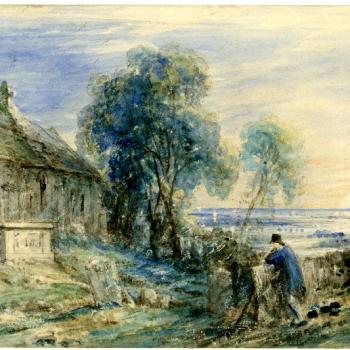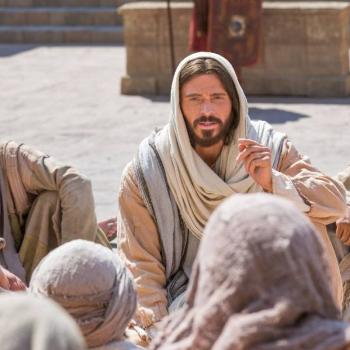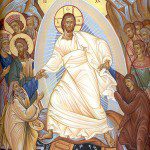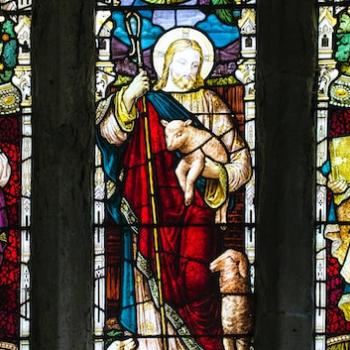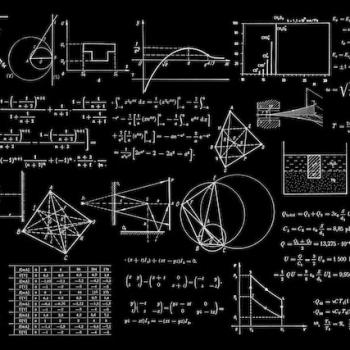
In this week’s gospel reading we hear Jesus proclaim, “I am the bread of life” (John 6: 48).
Bread. It’s a bakery good, the most common staple eaten around the world, and the anathema of low-carb diet enthusiasts everywhere. But it is also so much more. Because of its almost magical properties, I think of it as a superfood. It’s just not the kind that health and nutrition bloggers preach about endlessly online. Kale, raspberries, avocados, and green tea . . . you’re really cool too. But bread is a superfood on a completely different scale.
First, there’s history. A human-produced food that’s been around for close to 30,000 is freaking amazing. No two ways about it. Add to that the essential role of “kneading” in the making of bread, which – for lack of a better term – is a very intimate process. Sure, commercial bread-making removes this sense of connection, but for the individual baker with dough between her hands, the act of kneading is a very raw, physical encounter.
The Leavening
Once kneaded, the dough moves on to another nearly miraculous process called “leavening.” Honestly, it seems to me like the kind of sleight of hand even David Copperfield wouldn’t attempt. As I understand it, yeast is the oldest microscopic plant material that humans have cultivated for leavening, although industrially produced yeast is in common use today. It feeds on the sugars in the flour which in turn expels carbon dioxide.
Since the kneading process developed an elastic texture to the dough, those gas bubbles have somewhere to go. That’s what makes bread rise. In many ways, I think that’s a more impressive trick than sawing a woman in half or escaping from multiple sets of handcuffs. Whoever first discovered the powers of yeast long ago deserves his or her own program on the Food Channel. I might start a petition to get the (dough) ball rolling. Pun intended.
The Communion
It doesn’t end there. Bread is also the greatest culinary wingman of all time. I can think of no other food that you can (successfully and without excessive grossness) combine with so many other foods. And then there’s the whole “breaking” of the bread. Could any food be more widely shared with others? From the disciples recognizing the risen Jesus only when he broke bread after his resurrection to the passing of Grandma’s secret-recipe yeast rolls around the table at Thanksgiving, bread is synonymous with community. It’s no coincidence that bread has such a key role for Catholics at “Communion.”
It’s also no wonder that bread has become the ultimate symbol of nourishment in every form. In this week’s gospel reading, Jesus talks about nourishment. I love the concept, but to be honest, there are a few things I don’t love about this reading. Or more accurately, there are things I don’t love about how parts of it have been interpreted.
John’s gospel is the most poetic by far, and I love me some poetry. I mean, really. “In the beginning was the Word. And the Word was with God. And the Word was God” (1: 1). If there were a convention for writers of figurative language (sign me up), the writer of this passage would be the keynote speaker. The language is beautiful and figurative and insanely powerful.
The Tough Part
But for me, as much as the passage nourishes, it also agitates. Parts claw at me like the untrimmed nails of a beloved pet. I’m completely down with Jesus as “bread of life.” I’m good when I read the part where Jesus says, “…whoever comes to me will never hunger,” but I chafe a bit when it says, “…and whoever believes in me will never thirst” (35). I struggle further when we get to the line , “For this is the will of my Father, that everyone who sees the Son and believes in him may have eternal life, and I shall raise him [on] the last day” (40). For me, the issue here is a big one. What does it really mean to be a person who “believes in him?”
I think there are a couple different ways to answer this question. Many Christians believe it’s necessary to confess that Jesus is the Son of God in order to make it to heaven one day. If this viewpoint works for folks, then I say have at it. But it doesn’t work for me. If “salvation” is a function of belief statements about Jesus, then zillions of humans before his time end up SOL. That seems a little too stingy for a God that I believe is infinite love and mercy itself.
I answer the question of what it means to believe in Jesus a bit differently. I think it’s less about intellectual assent to doctrinal statements and far more about what we do with Jesus’ teachings. Following their lead is the key to fulfillment, both in this life and the next. The titles we give Jesus are all well and good if they are helpful for us. But it’s the teachings of Jesus that provide the true nourishment.
The Beauty of Bread
Our life experiences are the very things that “knead” the doughy softness of our true selves. It’s these experience that make room for the magic. Following Jesus’ teachings about love, compassion, and forgiveness is the yeast that bubbles up inside of us. It ferments the hardened, unconnected parts of ourselves to create something unimaginably beautiful. The process of life’s kneading creates the space we need for the teachings of Jesus to work their leavening magic. We have a few words for that process outside of the bakery: transformation, salvation, and redemption are a few that come to mind.
Jesus is the bread of life, the nourishment we desperately need. But it’s not because some cognitive assent to doctrinal statements is necessary to get the parachute we need when death hits the eject button. It’s because what Jesus taught us about being in right relationship with God, others, self, and creation is the path forward. It turns the tiny little eighth note that is our individual lives into an essential, precious, couldn’t-do-without piece of the symphony that is all of existence. Cutting a woman in half? Escaping from handcuffs? C’mon. Amateur hour.



